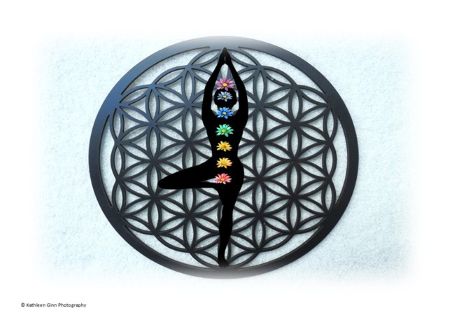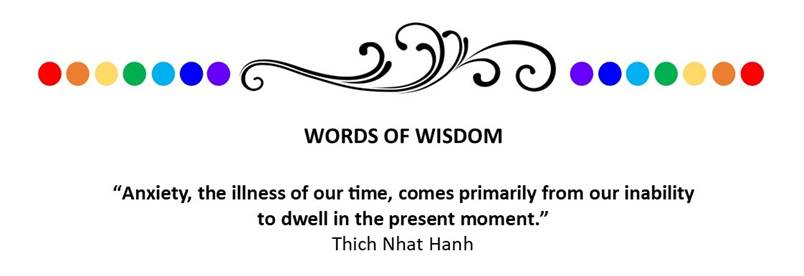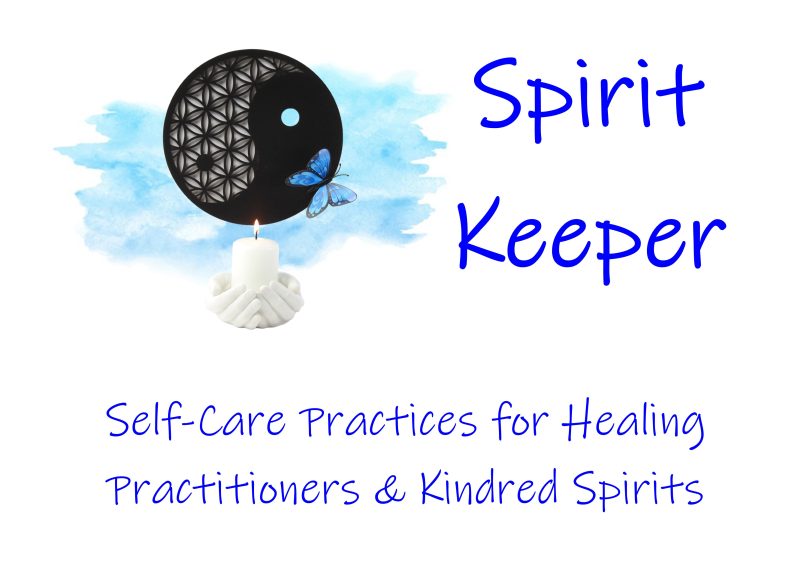Welcome, to Health & Wellbeing Magazine’s Spirit Keeper monthly column. This is the place where you will discover tips and practices for creating, developing and maintaining a personalised self-care practice.
If you are new to this month’s Spirit Keeper column, I recommend reading past articles to find out what a spirit keeper is and subjects already covered around self-care practices.
Amazingly we are already 3 months into 2025. In this April the column we will be looking at somatic descent and embodiment as a sacred self-care practice for Spirit Keepers..

Metaphorical Story about Embodiment & Somatic Descent
In the heart of a bustling city, amidst the cacophony of traffic and the hurried pace of life, lived a young woman named Rachel. Rachel was a whirlwind of activity, her mind constantly racing, her body always on the move. She was a successful professional, a devoted friend, and a loving daughter, and yet she felt a deep sense of unease within herself.
Rachel’s life felt like a ship tossed about on a stormy sea; her thoughts and emotions were like waves crashing against the sides of her vessel. She felt disconnected from herself, adrift in a sea of anxieties and worries. Her body ached with tension, her mind was overfilled with constant chatter.
One day, Rachel stumbled upon an old book on meditation. Intrigued, she decided to give it a try. She found a quiet corner in her apartment, closed her eyes, and began to focus on her breath. At first, her mind was a whirlwind of thoughts, but slowly with regular practice and discipline, she began to quiet the mental noise.
As Rachel continued to practice, she noticed a shift within her sense of self as well as her emotional wellbeing. Her thoughts became less frantic, her body less tense. She started to feel a sense of groundedness, a connection to the present moment.
One day, as she was walking through the park, Rachel felt a sudden urge to stop and simply be. She sat down on a bench, closed her eyes, and focused on the sensations of her body. She felt the warmth of the sun on her skin, the gentle breeze blowing through her hair, the soft grass beneath her feet.
In that moment, Rachel felt a deep sense of peace and tranquillity. She felt connected to herself, to her body, to the world around her. She embodied the sense of spiritual connection with all life in that moment.
From that day forward, Rachel continued to practice mindfulness and conscious embodiment. She learned to slow down, to savour the present moment, to connect with the sensations of her body.
As she did, she began to feel a sense of healing and wholeness within her. Her anxiety lessened, her body felt lighter, and her mind was clearer. She felt more connected to herself, to her loved ones, and to the world around her.
Rachel’s story is a metaphor for the benefits of becoming grounded and present within oneself. When we take the time to connect with our bodies and our minds, we can find a sense of peace and healing. We can learn to manage our stress, to regulate our emotions, and to live more fully in the present moment.
If you are feeling lost or disconnected, take a moment to connect with yourself as mind and body. Slow down, breathe deeply, and feel the sensations of your body. You may be surprised at the peace and healing you find within.

I currently work at a hospital which offers young people affected by eating disorders inpatient care. Modern medicine has labelled eating disorders as a mental-emotional illness. I support a team of specialists who are helping these young people to repair their relationship with food. Working there it has struck me how in the 21st Century so many of these inpatients live their life through a portable device. They nurture their relationships through social media, yet their family relationships are taught with tension and dysfunction. Their reality is focused through a lens of technology rather than person to person.
From my own observations, this disassociation from one-to-one personal relationships appears to have much influence on becoming disassociated from the physical body and the importance of this sacred vessel which our Soul created to experience life on Earth.
Interestingly, much of the therapy work these young people are offered is person to person and their time spent on a device is limited. They are encouraged to reconnect with other young people and their carers (support workers, nurses, therapists). They work with their family members with the support of a family therapist.
These young people slow down and reconnect with Mother Earth through gardening and the hospital is situated in the English countryside. They are trained in mindfulness techniques, how to ground themselves, breathwork, yoga and encouraged to find a hobby which engages them in mind, body and spirit into the present moment.
Whilst technology has made our lives better in a myriad ways, studies of mental health around the world in younger generations is demonstrating how addiction to our portable devices and streaming 24/7 is destroying our relationship with ourselves which then impacts our relationship with our loved ones.
We currently live in a world which often encourages us to disconnect from our bodies and to focus solely on our minds, therefore, the practice of somatic descent and embodiment offers a refreshing alternative. By cultivating a deeper connection with our physical selves, we can unlock a wealth of benefits for our overall health and well-being.
Let us consider the meaning of two words to understand what they mean and how we can begin to use mindfulness and meditation as a presence and embodiment technique.
- Somatic descent is the process of gently guiding our attention inward, toward observing the sensations of our body. It involves tuning into the subtle nuances of our physical experience, from the rhythm of our breath to the subtle shifts in our muscle tension. This inward focus can help us to become more aware of our bodily responses to stress, emotions, and the world around us.
- Embodiment, on the other hand, is the practice of fully inhabiting our physical form consciously. It involves cultivating a sense of presence and groundedness within our bodies, rather than feeling scattered or disconnected. Embodiment practices can include activities such as yoga, tai chi, or simply paying attention to our senses and body as we move through our day.

Benefits of Being Present
When we practice somatic descent and embodiment, we begin to bridge the gap between our minds and our bodies. This can lead to a number of benefits, including:
- Reduced anxiety and stress: By tuning into the sensations of our bodies, we can become more aware of our stress responses. This awareness can help us to manage stress more effectively and cultivate a greater sense of calm.
- Enhanced emotional regulation: By connecting with our bodies, we can gain a deeper understanding of our emotions. This can help us to regulate our emotions more effectively and respond to them with greater compassion.
- Improved physical health: Embodiment practices can help to improve our posture, flexibility, and overall physical well-being. They can also help to reduce pain and promote healing.
- Improved relationships: When we are more embodied, we tend to be more present and engaged in our interactions with others. This can lead to more meaningful and fulfilling relationships.
- Increased self-awareness: Somatic descent and embodiment can help us to become more attuned to our inner world. This can lead to a greater sense of self-awareness and a deeper understanding of our needs and desires.
Incorporating somatic descent and embodiment into our daily lives can be as simple as taking a few moments each day to check in with our bodies. We can also explore more formal practices such as yoga, meditation, or body-based therapies.
No matter what approach we choose, the benefits of cultivating a deeper connection with our bodies are numerous. By practicing somatic descent and embodiment, we can create a more harmonious and integrated sense of self, leading to greater health, happiness, and well-being.

My Personal Story & Discovery of Somatic Descent & Embodiment
Many of us over a lifetime have developed unconscious habits when it comes to the relationship with our bodies. In my case, I started my life as a young woman with a traumatic first period which never let up until I had an emergency hysterectomy some 30 years later. The monthly pain and continuous heavy mensuration meant I dreaded 14 days out of every month. I tried medication, eating differently and exercising and nothing helped. This meant I disassociated myself from my body at a very early age and focused on mental pursuits and academic goals.
I am now in my 60’s and I have found myself being guided by my spirit guides to focus on untangling my body from old patterns and my own eating disorder which is emotional eating. Ironically, it was during Covid when my journey and learning about somatic descent and embodiment began.
As a young child I loved being in nature and Covid offered me the opportunity to get out into nature daily and restart my hobby of photography. I found many people were intensely negative about Covid and their constant denigration of others who had differing opinions was oppressive and suffocating for me. I decided for my own sanity I needed to walk in nature and find something of beauty to photograph every day. I chose to focus on the beauty of life instead of the fragility of life. As I walked Mother Earth and focused on really seeing her beauty I was transported back to the awe and wonderment I experienced as a child in nature.
One evening my husband and I were watching Countryfile when a particular macro lens for a mobile phone was demonstrated and Martin felt I would find this particularly interesting given the breadth of photography I was practising (macro to landscape). He bought me the lens and off I went into nature to try and find the smallest of things to photograph. I photographed insects, icicles, frozen raindrops, mushrooms so small the eye could not make out detail. However, it was the insects who taught me the power of somatic descent and embodiment.
The macro lens is placed over the cellphone (mobile phone to UK users) camera. In order to take a picture you need to get within two inches or 4 cms of an insect.
Initially I was totally unaware of why I could take pictures of some and on other occasions they flew off. I naturally assumed that they flew off because they saw me as a threat. However, when I did manage to get a picture, what amazed me was how the beauty of the insect would shine through. This puzzled me, because having grown up in Africa, insects were considered a nuisance and yet I was capturing a moment of beauty. I began to observe my interactions with the insects more closely and what I noticed was when I was feeling serene and marvelling in the beauty of life, I was able to get a picture which captured the beauty of the insect. The moment I felt disconnected to life and its beauty, the insect would fly off or scuttle out of sight. Fascinated by this I asked my higher self what I was doing to create this feeling of inner peace and this was when I was introduced by my spirit guides to what the Buddhists refer to as the 1st level of conscious awareness and is also referred to as somatic descent. The belief in India and China is that the physical form is a sacred vessel and it needs to be prepared to become strong enough to ‘hold’ the Soul consciously. This means the first level of conscious awareness is awareness that the body is not separate from nature but itself the embodiment of nature.
Once I became aware of how looking for beauty had stimulated me to return to the present whilst walking in nature, I was then able to understand how my breathing and walking became a rhythm of conscious awareness and this meant I was fully present to the moment instead of thinking about a thousand other things. Mother nature showed me her beauty in all seasons when I went out walking and I captured snap shots of a particular moment in time which has led me to start untangling my mind-body from old patterns of thinking, emoting and how I live life.
Examples of mother nature I have captured using a cellphone, macro lens and being present, aligned and grounded within mind, body and spirit.


How to Untangle Your Body & Be Embodied & Present
Embodying somatic descent consciousness through conscious breathing and full-body relaxation involves a deliberate shift from mental activity to sensory awareness. Here’s a breakdown of how to approach this:
Understanding Somatic Descent
- Somatic: Relating to the body.
- Descent: A movement inward and downward, a settling.
- Consciousness: Awareness.
Therefore, somatic descent consciousness is about bringing your awareness deeply into the physical sensations of your body, allowing yourself to settle and ground. It’s a way to move out of your head and into your body.
Techniques:
1. Conscious Breathing:
Diaphragmatic Breathing:
- Lie down or sit comfortably.
- Place one hand on your chest and the other on your belly.
- Inhale deeply through your nose, allowing your belly to rise while keeping your chest relatively still.
- Exhale slowly through your mouth, feeling your belly fall towards your spine.
- Focus on the sensation of the breath moving in and out of your body.
- This type of breathing activates the parasympathetic nervous system, promoting relaxation.
- Practice this daily for 1 to 5 minutes.
Breath awareness:
- Simply notice the natural flow of your breath.
- Observe the sensations of each inhale and exhale.
- If your mind wanders, gently bring your attention back to your breath.
- Lengthening the exhale can increase relaxation.
- Practice this daily for 1 to 5 minutes.
2. Full-Body Relaxation:
Progressive Muscle Relaxation:
- Start with your toes, and systematically tense and release each muscle group in your body, moving upwards.
- Notice the difference between tension and relaxation.
- This helps to release physical tension and increase body awareness.
- Observe the body once you have reached the top of your body systematically tense and release each muscle group in your body moving downwards.
- When complete bring your attention to your breath and practice breath awareness.
Body Scan – this practice cultivates a deeper connection with your body:
- Lie down comfortably and close your eyes.
- Bring your attention to each part of your body, starting with your feet and moving upwards.
- Notice any sensations, such as warmth, tingling, or tension.
- Allow any tension to release by tensing and releasing specific muscle groups and then using the power of intention to relax the tension within the body.
- Systematically bring your attention to each part of your body by starting at the head and moving down towards the feet.
- When complete bring your attention to your breath and practice breath awareness.
Grounding – Bare Feet:
This exercise is best done bare foot on soil or grass.
- Feel the support of the ground beneath you.
- Visualise roots extending from your body into the earth.
- This helps to anchor you in the present moment.
Grounding – Bare Hands:
This exercise is best done with bare hands with trees and plants. This can be done indoors or outdoors.
- Find a plant or tree in your garden or if you are living in an apartment in a city centre use a pot plant.
- Close your eyes and visualise roots extending from your feet and body into the earth (even if you live in a high rise apartment).
- This helps to anchor you in the present moment.
- Now open your eyes and touch the plant/tree. You may choose to stroke its leaves or tree trunk. You may choose to just hold a part of the plant or tree in stillness. There is no right or wrong way to touch the tree or plant.
- Thank the plant or tree for helping you to ground and reconnect to the earth element.
- Observe the plant or tree’s beauty and desire to fulfil its potential as a plant or tree. Notice how its beauty makes you feel.
- Close your eyes and visualise roots extending from your feet and body into the earth once more.
- Thank the plant and tree for helping you become grounded and more aware of the beauty of life
3. Integrating Breathing & Relaxation:
- Combine diaphragmatic breathing with a body scan.
- As you breathe, direct your attention to areas of tension and visualise them releasing.
- Allow your breath to guide you into a deeper state of relaxation.
- Allowing emotions to be felt. Somatic practice is about feeling, not fixing. So when emotions arise, allow them to be felt, and breathed through.
4. Creating a Practice:
- Set aside dedicated time for practice and being present with yourself and your body.
- Create a quiet and comfortable environment.
- Start with short sessions and gradually increase the duration.
- Be patient and gentle with yourself.
Types of Body Patting Grounding Techniques:
General Body Patting:
- This involves gently or firmly (depending on your preference) patting various parts of your body.
- You can start with your legs, then move up to your torso, arms, and even your face.
- The focus is on feeling the sensation of your hands making contact with your skin.
- This technique helps to increase body awareness and bring you back to the present moment.
“Butterfly Hug” Technique:
This is a specific technique often used to soothe anxiety or distress.
It involves:
- Crossing your arms over your chest.
- Placing your hands on your upper arms or collarbones, with your fingertips pointing towards your shoulders.
- Alternately tapping your hands on your upper arms, mimicking the fluttering of butterfly wings.
- Combining this with deep, slow breaths can enhance the calming effect
This technique is thought to stimulate both sides of the brain, promoting a sense of calm and integration.
EFT Tapping (Emotional Freedom Techniques):
- This technique combines tapping on specific meridian points on the body with verbal affirmations.
- It’s used to address emotional and physical issues.
- While more complex than simple body patting, it involves rhythmic tapping on various points, which can have a grounding effect.
Why Body Patting is Grounding:
Sensory Input:
- The act of patting provides tactile sensory input, which helps to bring your attention to your physical body.
- This can be particularly helpful when you’re feeling disconnected from your body or overwhelmed by thoughts.
Nervous System Regulation:
- Rhythmic tapping can have a calming effect on the nervous system, helping to reduce anxiety and stress.
- It can help to shift your body from a “fight-or-flight” response to a more relaxed state.
Increased Body Awareness:
- By focusing on the sensations of touch, you become more aware of your body in the present moment.
- This can help to ground you and reduce feelings of dissociation.
How to Practice:
- Find a comfortable and quiet space.
- Start by taking a few deep breaths.
- Begin gently patting your body, paying attention to the sensations.
- You can vary the pressure and speed of the patting to find what feels most grounding for you.
- If you’re feeling anxious, try the “butterfly hug” technique.
- You can incorporate verbal affirmations or positive self-talk while patting.
Body patting is a simple yet effective grounding technique that can be used anytime, anywhere.
Summary – Key Considerations:
- Emotional release: Somatic practices can sometimes bring up stored emotions. Allow yourself to feel these emotions without trying to suppress them.
- Mindfulness: Somatic descent is a practice of mindfulness. It’s about being present with your body’s sensations without judgment.
- Nervous system regulation: These practices help to regulate the nervous system, shifting from a state of “fight-or-flight” to “rest-and-digest.”
By consistently practicing these techniques, you can cultivate a deeper connection with your body and embody somatic descent consciousness. This leads to a deeper connection with all life. The present moment will become more alive for you and when challenges arise, you will naturally start to ground, centre and align yourself in micro moments until you can find the time to genuinely release and reprogramme your mind, body and spirit.
Yoga, Tai Chi and Qi Gong are all types of exercise which embody the practice of conscious awareness of the mind-body interaction. There is no such thing as a wrong time to start being mindful of your own body and preparing it to experience higher states of consciousness awareness. The best place to start is from this moment and to make a commitment to bring it into your self-help daily practices of health care.

Next Month …
Depending on where you are living on Mother Earth in May you are either experiencing rebirth or release. The northern hemisphere is entering late spring which is the period where one observes new life emerging after winter. In the southern hemisphere they are entering late autumn which is the period where one observes nature releasing and preparing itself for the winter months. At all times nature is both competitive and collaborative in each season. At all times seasons are polar opposites depending on the place in which you are standing on Mother Earth. Mother Earth herself is half bathed in daylight whilst the other half is sleeping at night. So often in our thinking we focus on the polar opposite of either or. Yet many spiritual practices have shared the key to becoming more peaceful within is in our ability to appreciate and/and.
In May the column will look at dialectical thinking and journalling as a sacred self-care practice for Spirit Keepers.
Until next month. From one kindred spirit to another – be safe, be well, be authentically you.
In gratitude
Kathleen



